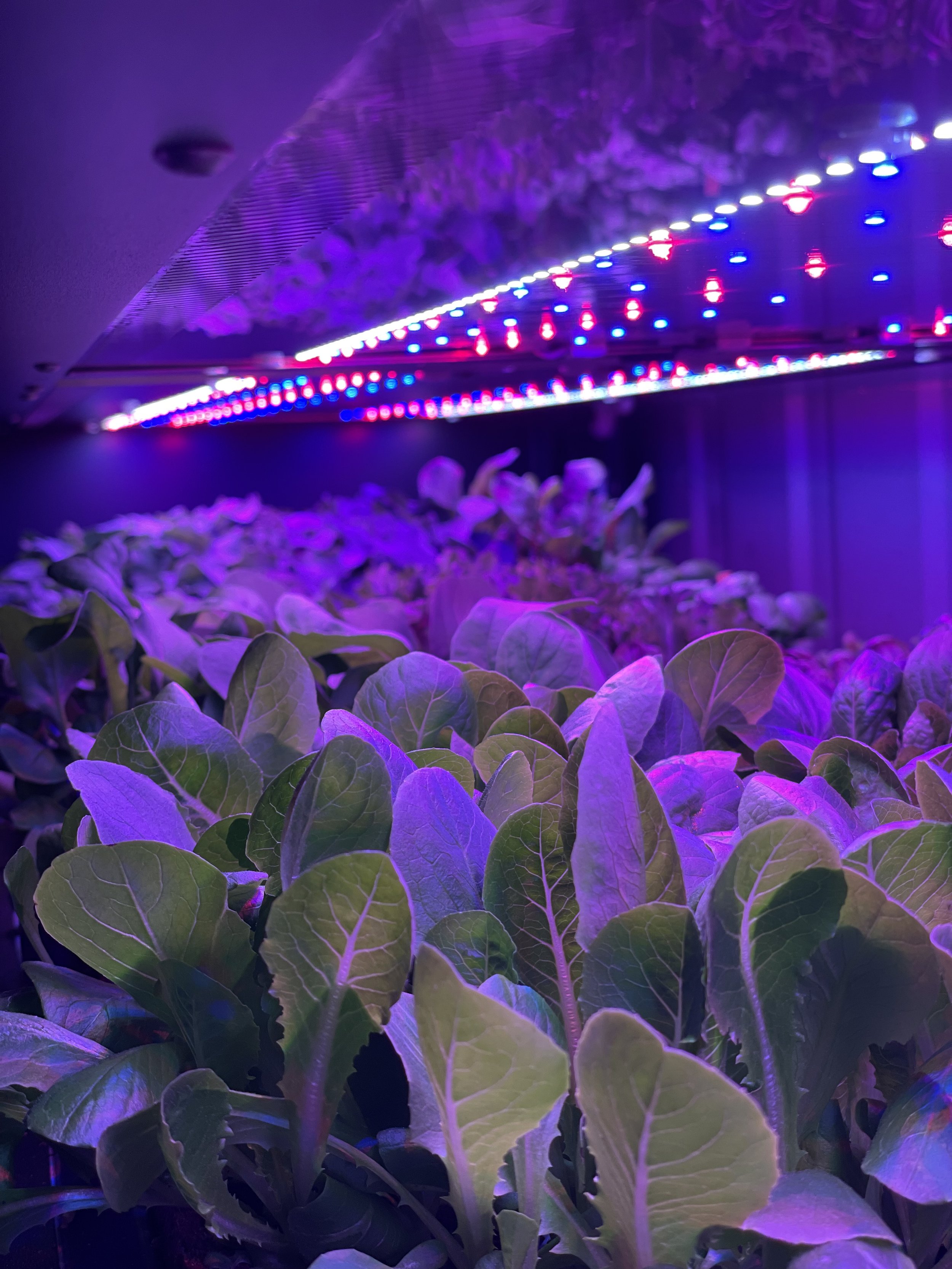
News About Farming in Shipping Containers & Limited Indoor Spaces
An Ohio Zoo Is Using Hydroponics To Feed Animals Homegrown Greens
Cincinnati is not the only zoo producing its own food and sourcing items locally. Mike Maslanka, senior nutritionist at the Smithsonian National Zoo and chair of the Association of Zoos and Aquariums’ nutrition advisory group, estimates every one of the 238 AZA-accredited institutions is growing or sourcing at least some of their animals’ food locally.
“So, that's whole prey, that's insects, that's bamboo and brows, hay, produce,” Maslanka said.
A poster at the Cincinnati Zoo explains the process behind the giraffe's food. Isabel Nissley / The Ohio Newsroom
But, the number of zoos using hydroponics is smaller. Neither of zoos in Cleveland or Columbus currently grow food hydroponically.
Maslanka said that could be due to high costs of the technology.
Cincinnati Zoo Grew More Than 8,000 Pounds of Food During The Past Year
Last April, the Cincinnati Zoo started growing some of the food it needs to feed its animals. Less than a mile from the elephant enclosures and manatee displays, it set up two storage containers equipped with hydroponic systems to cultivate lettuce and kale.
Since then, the zoo has grown more than 8,000 pounds of produce in Avondale — enough to supply the giraffe feeding program.
Sustainability Project Manager Megan O’Keefe says the zoo still ships food in, but growing on-site is helping it be more resilient.
“We’re dipping our toe in the water because there has been supply chain issues, especially with climate change — we're experiencing more droughts on these farms that we get our lettuce from in California, in the Southwest,” O’Keefe said.
Cincinnati Zoo Pilots Container Farming To Feed Giraffes, Manatees
A new system at the Cincinnati Zoo & Botanical Garden is providing hundreds of pounds of fresh produce for animals each week. The zoo is using shipping containers outfitted with hydroponic growing systems, making it possible to grow romaine and kale on-site.




